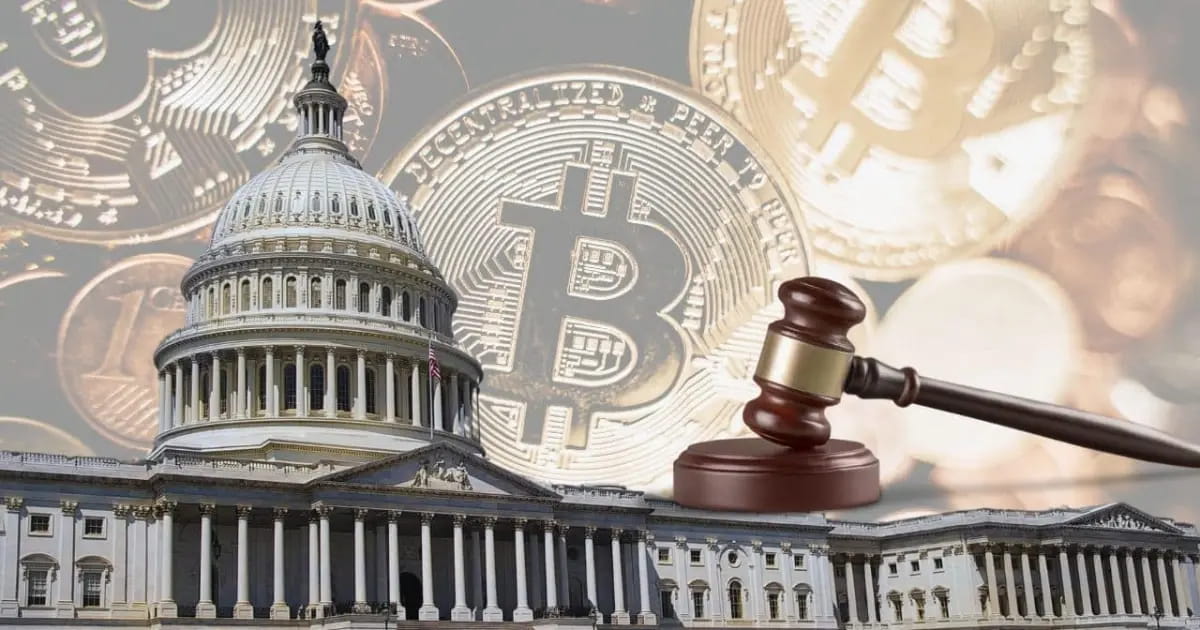The hammer of the (GENIUS Act) about to fall on Capitol Hill will not only reshape the billion-dollar stablecoin market but may also bring a profound 'purification' to the chaotic decentralized finance (DeFi) in an unexpected way.
At first glance, this long-awaited milestone bill provides 'legitimacy' for stablecoins — it requires compliant stablecoins to be fully backed by cash and short-term U.S. Treasury securities maturing within 93 days, intending to securely tether the reserves of the crypto world to the trajectory of U.S. monetary policy. This seems to be a dawn of the industry embracing regulation and moving towards the sunlight.

However, the sharp edge of the bill goes far beyond this. Its most severe cut directly targets the 'interest-earning' function of stablecoins — it explicitly prohibits stablecoins from paying any form of interest or yield. This is tantamount to declaring the death penalty for 'yield-bearing stablecoins.' For years, the DeFi field has tried to balance between 'stable value' and 'hidden interest,' but the dream of navigating the regulatory gray area was instantly shattered by the clear definitions of the (GENIUS Act).
Why take drastic measures? Protecting banks also requires 'restoring the source.'
This move by Congress appears to protect the traditional banking system. If stablecoins can earn interest, it could trigger a massive migration of deposits, undermining the foundation that supports the real economy (especially loans for small and medium-sized enterprises). Keeping stablecoins 'interest-free' aims to maintain the stability of the existing credit system.
But the deeper intention is to question the underlying logic of DeFi. The previous model of 'quietly' embedding earnings in stablecoins, with unclear risks, is viewed as a systemic risk. The (GENIUS Act) mandates that earnings must come from external, transparent channels (such as liquidity mining, arbitrage strategies, dynamic hedging, etc.), forcing DeFi protocols to shift from competing on 'high-interest promises' to demonstrating genuine skills in 'risk control' and 'sustainability of returns.' This is akin to a detoxification process.
Deeper Binding: The 'dance' between DeFi and the U.S. Treasury market.
The bill requires that stablecoin reserves must be highly concentrated in cash and short-term debt, inadvertently embedding DeFi's lifeblood deeper into the U.S. Treasury market. Imagine if hundreds of billions in stablecoin reserves flood into the short-term debt market, DeFi's liquidity will resonate deeply with the U.S. Treasury market.
This binding is a double-edged sword. In favorable conditions, it brings stability; however, if faced with an interest rate storm or market panic, reverse capital flows could instantly drain the liquidity of DeFi protocols relying on stablecoins (like USDC, USDP) as collateral. A new type of 'currency reflexivity' is forming — the pulse of DeFi will synchronously beat with the health of the U.S. Treasury market, serving as both an anchor and a new source of risk.
Is it a blessing in disguise? DeFi may welcome an opportunity for a 'healthy transformation.'
Ironically, this seemingly innovation-stifling 'interest ban' may become a turning point for DeFi to mature and build real competitiveness.
01 Transparency Drive: Earnings must be explicit and auditable, forcing protocol designs to be more transparent and resilient in risk modeling. Users can see more clearly 'where the money comes from and who bears the risk.'
02 Compliance is an Advantage: Protocols that actively embrace smart compliance (such as embedding AML, KYC layers, and establishing token whitelists) will be the first to open the 'compliance corridor' for connecting with institutional capital, building a new moat.
03 Elimination and Evolution: Players who continue to rely on the vague 'shadow banking' model will be isolated beyond the regulatory walls, with increasingly limited survival space. The speed of repricing regulatory risks far exceeds expectations; those who ignore boundaries will face capital depletion, frozen cooperation, and a dead end with no exit.
Long-term thinking: Clear boundaries lead to a solid foundation.
(GENIUS Act) is not the end of DeFi, but it brutally bursts the bubble of the regulatory arbitrage fantasy surrounding 'stablecoin interest.' It sends a clear signal: passive income cannot be arbitrarily attached to stablecoins; it must originate from real economic activities, accompanied by transparent collateral, rigorous disclosures, and sufficient stress testing.
For DeFi, which aims for the long term and genuinely challenges or complements the traditional financial system, this may be a necessary growing pain. Saying goodbye to the gray ambiguity of regulation and demonstrating the ability to create value and manage risks within clear boundaries — though not a smooth path, it may be DeFi's 'coming of age' from chaotic bubbles to a stable future. Breaking out of the cocoon, the foundation is solid. This harsh regulatory fire perhaps burns away the delusions, leaving behind the solid seeds for DeFi's future spread.
I am Tang Seng! If you want to delve deeply into the crypto world but don't know where to start, and want to quickly understand the information gap, click on my avatar to follow me for firsthand information and in-depth analysis!